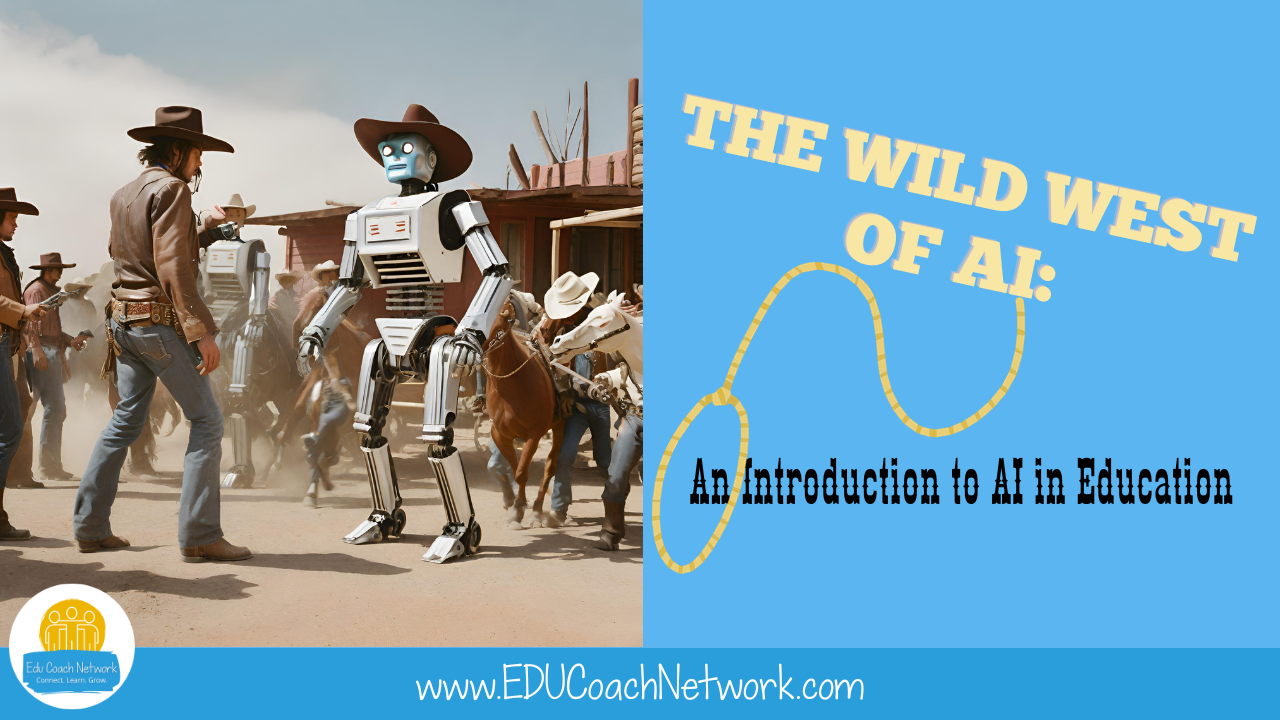
The Wild West of AI: An Introduction to AI in Education
Sep 22, 2023Written by Matthäus Huelse
Saddle Up!
Artificial Intelligence (AI) is increasingly becoming a part of our daily lives, and education is no exception. AI has the potential to revolutionize the way we teach and learn, offering new opportunities for personalization and efficiency. However, it is important to approach these opportunities with caution and understand the ethical implications of data sharing and the responsibility we have to ensure the safe and appropriate use of AI technology in educational settings.
At its core, AI is a branch of computer science that aims to create systems capable of performing tasks that typically require human intelligence. These tasks include learning from experience, recognizing patterns, understanding natural language, and making decisions. AI's ability to learn and adapt makes it a powerful tool in various fields, including education.
Hold Up, Partner! A Word of Caution Before We Begin
AI is not just a concept from a science fiction novel; it is already changing the way we teach and learn. However, it is important to be cautious when it comes to sharing and feeding data into AI systems. While AI can be a valuable asset for reading, analyzing, and visualizing data, we must also consider the privacy of our own information and that of our students. Personal identifiable information, intellectual property, and any other sensitive data should never be uploaded or shared with third-party AI services. Additionally, many AI tools have age restrictions, requiring users to be 18 years or older. It is important to be aware of these limitations and ensure compliance.
What in Tarnation is AI?
AI involves machines or software producing human-like responses in text form by compiling vast amounts of data and using statistical models to predict the best possible outcome. An example of AI in action is the text prediction feature on smartphones, which suggests the next word in a sentence based on previous input. This approach, known as Large Language Models (LLMs), provides statistically relevant answers.
Different companies and developers have expanded on this concept, adding more functionality to AI. While initial fascination may have been with AI's ability to generate poems, stories, or lyrics, the real potential lies in the frameworks and applications that have been infused with AI. Microsoft and Google have announced plans to integrate AI-powered features into document editors, spreadsheets, and slide deck creators. Companies in various industries are exploring AI, and individuals are creating their own LLMs using open-source tools and publicly available data. Engaging with AI tools is an opportunity to embrace a technology that may change the way we work, search the internet, and consume media.
Teachers have also been exploring AI tools designed specifically for educators. Established edTech platforms like Quizlet, Kahoot!, and Curipod are integrating AI into their existing tools, while new services like MagicSchool.ai aim to provide comprehensive solutions for teachers. It is encouraged to explore and experiment with these tools, but caution must be exercised to protect student data. While many of these services are currently free, it is likely that some will transition to paid models in the future.
Riding the AI Trail in Education
AI's relevance in education lies in its ability to enhance learning experiences and outcomes for students. There are several aspects to consider when exploring this topic.
The first aspect is the use of AI as a tool for teachers. AI can save time and energy by automating tasks such as lesson planning, correspondence, and creating personalized materials. By acting as a time-saver and productivity booster, AI allows teachers to focus on building relationships and guiding students.
The second aspect focuses on how students use and interact with AI. AI can perform various tasks in the classroom, serving as a fallacy finder, journal reviewer, or even generating content in different subjects. However, it is important to address academic integrity and the reliability of AI. AI is not infallible and can produce inaccurate or non-existent information. Skepticism and critical thinking must be encouraged when using AI-generated answers.
The third aspect involves introducing and contextualizing AI as a powerful tool. While AI can assist students in completing tasks, it is crucial to address issues of academic integrity, bias, and the limitations of AI technology. The data used to train AI models often comes from the internet, which contains inherent biases and questionable data sources.
Final Roundup
AI offers exciting possibilities for the future of education, but it is important to approach it with caution and a thorough understanding of its implications. Educators must carefully consider the ethical implications and practical considerations to harness the power of AI effectively. Clear and equitable policies will be essential for the responsible implementation of AI in the classroom.
AI is not a magical solution but a tool that, when used thoughtfully and ethically, can enhance teaching and learning. Collaboration between educators, policymakers, and technologists is crucial to ensure that AI benefits all students and respects their rights. In the next AI blog post, we will explore specific AI tools and how to implement them in the classroom. Stay tuned!
Stay connected with news and updates!
Join our mailing list to receive the latest news and updates from our team.
Don't worry, your information will not be shared.
We hate SPAM. We will never sell your information, for any reason.

